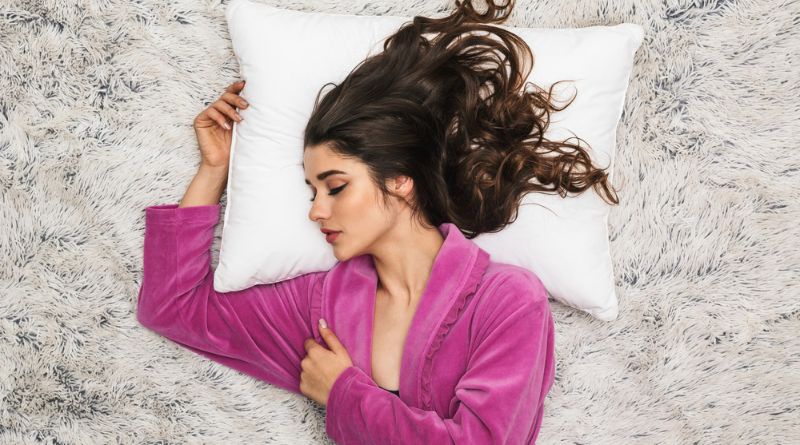Achieving a luscious, healthy mane begins with understanding the impact of our nighttime routines. For many of us, sleep is a time of restoration, but it can also be a period of significant damage to our hair if not handled correctly. The secret lies in the way we style our hair before bedtime.
In this comprehensive guide, we delve deep into the world of “Sleep Hairstyles to Avoid Hair Damage,” unlocking the secrets to waking up with gorgeous, damage-free locks every morning.
Hair damage caused during sleep is often underestimated; the friction against pillowcases, tight hair ties, and improper hairstyles can lead to breakage, split ends, and overall hair woes.
By exploring the right techniques and styles, tailored to various hair types, we empower you to transform your nighttime routine.
Whether you have curly, straight, wavy, or coily hair, this guide is your passport to understanding the best sleep hairstyles that not only preserve your hair’s health but enhance its natural beauty.
Join us on this enlightening journey, as we unravel the art of sleep-friendly hairstyles, offering you the key to waking up with hair that’s not just rested, but radiant.
Understanding Hair Damage during Sleep

Sleep should ideally be a time of rest and rejuvenation, not a battleground for your precious strands. Let’s delve into the mechanisms of hair damage during sleep, shedding light on the unsuspecting culprits.
Also Read: Embracing the Beauty of Short Hairstyle for Women
- Friction and Its Menacing Effects: Friction between your hair strands and the pillowcase might seem innocuous, but it’s a silent assassin. As you toss and turn during the night, your hair rubs against the fabric, causing friction. This friction, especially on cotton pillowcases, can strip your hair of its natural oils, leading to dryness and breakage.
- The Perils of Tight Hair Ties: That tight ponytail might seem like a practical solution, but it’s a prime suspect in causing hair damage. Pulling your hair into a tight bun or ponytail stresses your hair follicles and can lead to traction alopecia, a condition where hair is gradually pulled out from the roots.
- Rough Pillowcases and Their Consequences: The choice of your pillowcase matters more than you think. Rough materials like cotton create resistance against your hair strands, causing them to tangle and break. On the other hand, silk and satin pillowcases provide a smooth surface, reducing friction and preventing hair damage.
- Impact of Sleeping Positions: Believe it or not, your sleeping position matters too. If you often sleep with your hair spread out, it’s more prone to tangling and friction. Adjusting your sleep position or using the right sleep hairstyles can mitigate these issues.
Popular Sleep Hairstyles To Avoid Hair Damage

Finding the right sleep hairstyle is akin to selecting the perfect armor for your hair. Avoiding certain popular sleep hairstyles can significantly reduce the risk of hair damage. Here, we’ll uncover the styles you should steer clear of, along with their alternatives that promote hair health and vitality.
Tight Ponytails and High Buns
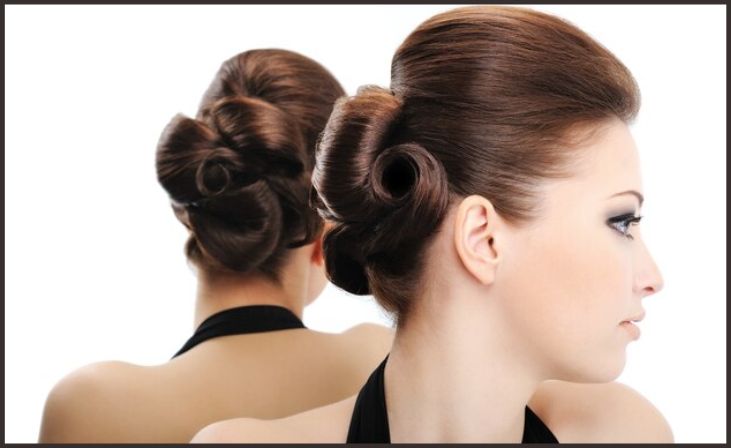
While tight ponytails and high buns might seem like quick fixes, they can wreak havoc on your hair’s health. The constant pull and tension exerted by these styles stress your hair follicles, leading to breakage, thinning, and even hair loss. Over time, this strain weakens your hair shaft, making it more susceptible to damage.
Opt for loose, low hairstyles like loose braids or twists that distribute tension evenly, safeguarding your hair from unnecessary stress. By choosing gentle alternatives, you preserve your hair’s strength and vitality, ensuring it remains beautiful and resilient.
Traditional Elastic Hair Ties
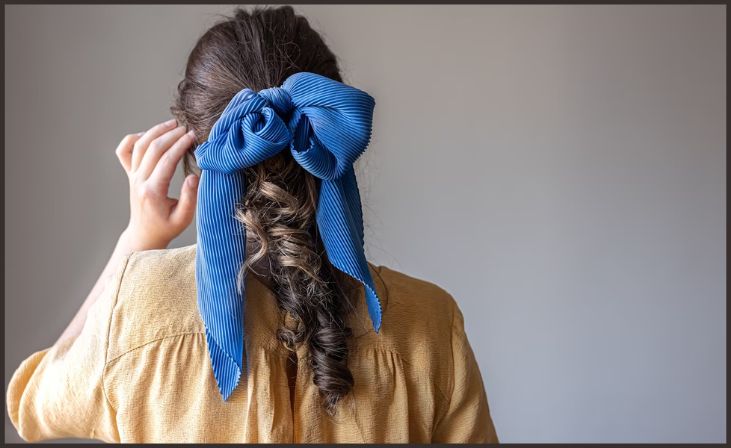
Those seemingly harmless traditional elastic hair ties can be your hair’s silent adversaries. Their tight grip and often harsh materials cause friction, leading to breakage, split ends, and overall damage. The metal clasps and tight elastics catch on delicate hair strands, causing unnecessary stress.
Switch to hair-friendly alternatives like cloth or silk/satin scrunchies. These soft, snag-free options secure your hair without causing breakage, ensuring your hair remains strong and healthy. By making this simple change, you protect your hair from daily wear and tear, preserving its natural beauty and vitality.
Sleeping with Wet Hair
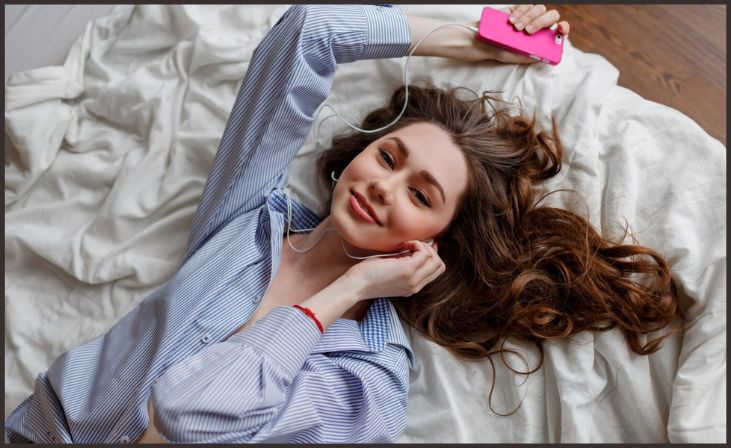
Sleeping with damp hair might seem harmless, but it’s a habit that can compromise your hair’s integrity. Wet hair is more susceptible to breakage and tangling as the shaft swells, becoming weaker.
The friction against your pillow during sleep exacerbates this vulnerability. To maintain healthy locks, avoid sleeping with wet hair whenever possible. If you must, gently pat your hair dry and allow it to air dry partially before bedtime. This precautionary step ensures your hair retains its strength, preventing unnecessary damage and promoting overall hair health.
Leaving Your Hair Down
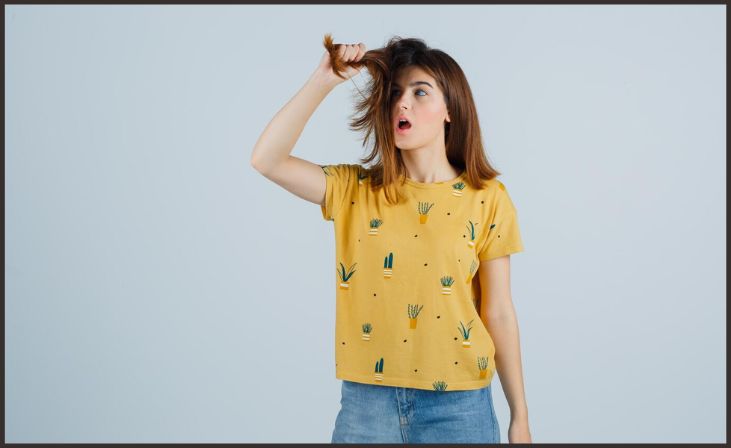
As tempting as it is to let your hair cascade freely, leaving it down while you sleep can lead to a morning of knots and tangles. Your hair is more prone to friction against the pillow, causing it to tangle and break.
Active sleepers exacerbate this issue. To prevent this nightmare, opt for containment. Gather your hair into a loose braid or twist. This simple step not only minimizes tangling but also reduces friction against your pillow, ensuring you wake up with smooth, damage-free locks every day.
Sleeping on Cotton Pillowcases

Cotton pillowcases, while common, pose a threat to your hair’s well-being. The rough texture of cotton creates friction, leading to tangles, breakage, and frizz. Your hair rubs against the abrasive surface, causing damage, especially during restless nights. Upgrade your pillowcase to silk or satin.
Their smooth, soft texture minimizes friction, allowing your hair to glide effortlessly. By making this switch, you create a gentle environment for your hair, reducing the risk of breakage and preserving your hair’s natural shine. This small change can significantly enhance your hair’s health, ensuring you wake up with beautiful, smooth tresses each morning.
Also Read: 10+ Stylish Hairstyle for Women Over 40
Benefits Of Using A Silk Pillowcase For Hair Health
Silk pillowcases are more than just luxurious bedroom accessories; they are game-changers for your hair health. Here’s why making the switch to silk can transform your haircare routine:
- Reduced Friction: Silk’s smooth surface creates minimal friction against your hair strands. This means less tangling and breakage, keeping your hair smooth and knot-free.
- Preservation of Moisture: Silk’s natural fibers retain your hair’s moisture, preventing dryness and frizz. Unlike cotton, which can absorb moisture from your hair, silk helps your locks maintain their natural oils.
- Gentle on Cuticles: The softness of silk is gentle on your hair cuticles, preventing roughening and damage. Your hair glides effortlessly on silk, maintaining its sleekness and shine.
- Prevention of Split Ends: With reduced friction and gentle surface, silk pillowcases minimize split ends. Your hair ends encounter less resistance, leading to healthier, fuller-looking hair.
- Ideal for All Hair Types: Whether you have curly, straight, wavy, or coily hair, silk pillowcases cater to all hair types. They maintain the integrity of various textures, promoting overall hair health.
- Reduced Absorption of Hair Products: Unlike cotton, silk pillowcases don’t absorb your hair products such as oils and serums. This ensures that the products stay in your hair, delivering maximum benefits without being absorbed by your pillow.
- Promotion of Hair Extensions’ Longevity: If you wear hair extensions, silk pillowcases are especially beneficial. They reduce friction, helping extensions last longer and remain tangle-free.
Also Read: Elegant and Timeless Hairstyle for Women Over 50
Conclusion
In the quest for luscious, damage-free locks, your bedtime choices matter. By avoiding tight ponytails, wet hair, leaving your hair down, and cotton pillowcases, you pave the way for healthier hair. Embrace loose styles, silk pillowcases, and gentle hair accessories. With these simple changes, you transform your nighttime routine into a nurturing ritual. Your hair deserves the best care, and by making these adjustments, you ensure it stays resilient, beautiful, and ready to shine every day.
FAQ
Sleep hairstyles that cause friction, tension, or dampness can lead to hair damage, including breakage, split ends, and thinning.
Yes, silk pillowcases are suitable for all hair types, from straight to coily. They maintain hair texture and reduce friction, making them an ideal choice regardless of your hair’s natural pattern.
Silk pillowcases typically last 6-12 months, depending on usage and care. Regularly changing your pillowcase ensures it remains smooth and effective in reducing hair damage.

